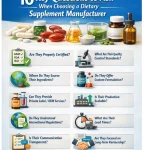Emigrating for love can be a powerful reason to move across the world. When it comes to Australia, a country known for its spectacular scenery and high quality of life, the allure is evident. For those in relationships with Australian citizens or permanent residents, the Australian Spouse Visa offers a pathway to build a life together in the Land Down Under. Understanding the nuances and requirements of the spouse visa process is essential, and this article will provide a comprehensive overview.
Eligibility for a Spouse Visa
Before delving into the application process, it’s crucial to ascertain one’s eligibility for a spouse visa. The Australian government defines a spouse relationship as one where the couple is married (either in Australia or overseas) and the marriage is legally recognised in Australia. Applicants and their partners must also have a mutual commitment to a shared life as a married couple to the exclusion of all others.
Types of Spouse Visas
There are two main pathways for spouse visa applications: the Partner (Provisional) visa (subclass 309) and the Partner (Migrant) visa (subclass 100). The former is a temporary visa for those outside Australia, which can lead to the latter, a permanent stage, after a period of time and upon meeting further criteria.
Application Process
The process of applying for a spouse visa is meticulous and demands attention to detail. Initially, applicants must gather relevant documents that prove the legitimacy of the relationship, such as joint bank account statements, household bills in both names, and other evidence of a shared life. Each case is unique, and consulting with immigration experts can provide a personalised Guide to Spouse Visa in Australia.
Meeting the Requirements
In addition to relationship evidence, applicants must meet health and character requirements, including medical exams and police checks from any country they have lived in for 12 months or more during the past ten years. English language proficiency is also considered, although there is no mandatory test for spouse visa applicants.
Financial Considerations
The costs involved in applying for a spouse visa are not insignificant. They include application fees, health assessments, police clearances, and possibly legal or professional advice. Applicants are encouraged to consider these expenses when planning their immigration journey.
Navigating the Legalities
Immigration law is complex, and Australian visas are no exception. The legal framework surrounding spouse visas can be intricate and intimidating. Seeking legal advice or the services of a registered migration agent can be invaluable in navigating the red tape and ensuring that all bases are covered.
Processing Times
The wait time for a spouse visa can be protracted, varying depending on the volume of applications being processed and the complexity of individual cases. Applicants are urged to apply well in advance of their desired move date and maintain flexibility in their travel plans.
Conditional Residency Period
Upon grant, the Partner (Provisional) visa confers a two-year conditional residency period before eligibility for the Partner (Migrant) visa arises. This period allows the Australian government to ascertain that the relationship is genuine and ongoing.
Importance of Honesty
Honesty in the visa application process is paramount. Any discrepancy or falsification discovered can lead to visa rejection or cancellation. Applicants and sponsors must be truthful and forthcoming in all aspects of their applications.
Changes in Circumstances
Immigration policies and personal circumstances can change. If any details alter during the application process or provisional period, such as a change of address, a new job, or a change in the relationship, applicants must notify the authorities promptly.
Preparing for Integration
Moving to a new country under a spouse visa isn’t just about paperwork; it’s also about preparing for cultural and lifestyle changes. Integration into Australian society will involve understanding local customs, perhaps learning nuances of the language, and finding employment or further education opportunities.
Continued Commitment
The partner relationship assessment doesn’t end once the provisional visa is granted. Couples must continue to demonstrate their commitment and the genuine nature of their relationship, leading up to the transition to permanent residency.
Appeals and Rejections
If an application is rejected, there may be options to appeal the decision. With strict deadlines and various legal intricacies, seeking expert help promptly is advisable in such scenarios.
Conclusion
The journey to accession a spouse visa in Australia involves much more than just a set of filled forms. It encapsulates a demonstration of genuine relationship, compliance with legal requirements, and preparation for a shared future in Australia. Comprehensive knowledge and meticulous planning are key, and it often benefits from seeking a detailed Guide to Spouse Visa in Australia. With understanding and perseverance, couples can navigate this path to love and a life together Down Under.
The path to a spouse visa is not always a straightforward one, but for many it represents a bridge to a new life rooted in love and partnership. For those who properly prepare and approach the process with clear expectations and thoroughness, the rewards are immense – a shared future in one of the world’s most desirable locations.







